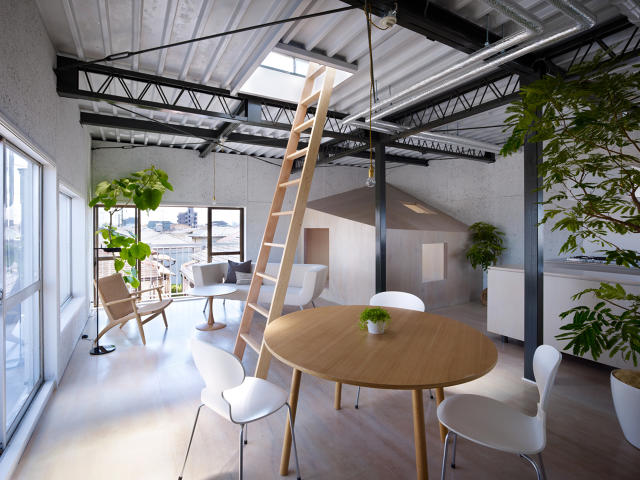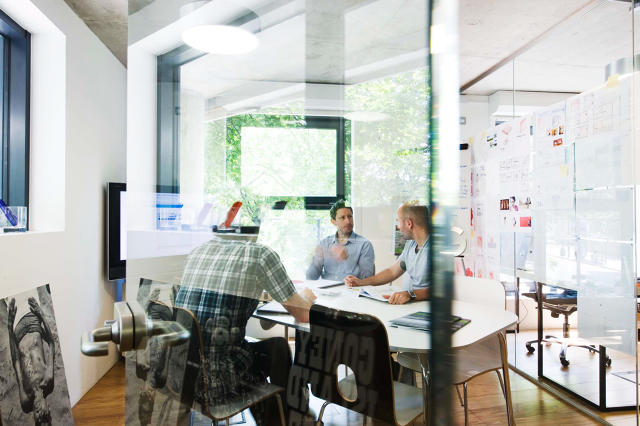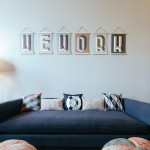Is The Open-office pattern Reversing Itself?
Employers spent years pulling down their partitions. Now they are slowly building them back up.
June eight, 2015
to be able to preserve space, improve employee communications, and save money, many companies turned into gung-ho about open-place of business designs within the final a number of years. At more and more workplaces these days, you’ll be able to find employees filled into cavernous (but beautiful) rooms without partitions. whether or not workers like these layouts is a contentious debate (as quick company staff had once, right here).
Now the backlash against open workplaces has begun. Steelcase designs closed spaces to retrofit open workplaces so introverts do not hate them. Some tech corporations are rethinking their open plans altogether. however few are slightly ready to surrender on the open place of work utterly. as an alternative, companies appear to be on the lookout for a middle ground.
Primo Orpilla, foremost clothier at San Francisco-based totally inside design agency O + A—a firm that has labored with large-name tech corporations like Uber, Microsoft, and OpenTable—has considered the transition from closed to open workplaces and back again. “i believe folks jumped to open workplaces in 2008 and 2009. It was once at all times popular among smaller gaming and social media corporations,” he says. “Then it caught on in 2009 and 2010, when no longer only Google had an open plan, but facebook did too.”

The administrative center model appealed to tech firms, he says, as a result of the open plan’s affiliation with a startup ambiance. That ethos eventually unfold upward into higher tech corporations as well. Plus, within the dear Bay space, it makes numerous economic sense. If you could go from 250-sq.-toes per person to one hundred ten and even less, it makes a tremendous distinction in the cost of place of work house.
Open offices do have other benefits. In certain settings, they improve conversation and create a way of camaraderie. but they also make it onerous to pay attention for long classes of time, and it’s tough to adjust to an open workplace if you find yourself used to having privateness. which is the place the backlash is available in.
“truly the backlash I’ve viewed in the final two or three years has been as a result of numerous these older firms are migrating to an open plan . . . the place you might be asking an older developer to sit on a 30 via 60 bench in a huge house,” says Orpilla. “it’s now not handiest the noise however the line of sight. individuals get distracted through individuals strolling by using, and there’s an total pollution of the culture.”

So what does the new breed of administrative center—a compromise between open and closed offices—look like? certainly one of O + A’s clients, a startup known as Quid, designed its house with unique “phone sales space” rooms for when employees need quiet time. The administrative center also has a lounge-like room referred to as The safe haven, which has an open roof. that implies it offers visible privacy, however now not acoustic privacy. “it is a bit bit of visible break. You shouldn’t have to put within the electrical and mechanical installations of a troublesome-walled workplace,” says Orpilla. conference rooms at Quid also fluctuate in size, ranging from massive rooms to rooms that fit just two to a few individuals.
Yelp, every other O + a consumer, switched places of work in 2013. the company stored its open-workplace aesthetic, however like Quid, it tried to add in more personal spaces. “there are such a large amount of different teams which have different expectations. Engineers love quiet spaces compared to the gross sales group. We attempt to balance it out. There aren’t any non-public workplaces,” says John Lieu, director of actual property and services at Yelp.
At Yelp’s new-ish place of business, there are telephone booth rooms, relax-out rooms, and quite a few convention rooms of various sizes. Lieu also took 35% of the conference rooms off Yelp’s reservation gadget, so that there are all the time spots to be had.
Orpilla’s advice for companies looking to adjust their open workplaces: have numerous variety and do not cram too many people right into a small house. “for those who over-densify and don’t complement it with correct quantity of small areas, it is an issue,” he says.
[Top Photo: Yuri_Arcurs/Getty Images]
fast company , read Full Story
(162)














